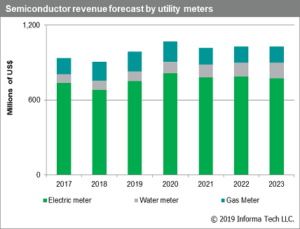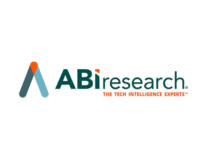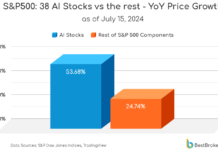
Regional legislation and smart management energize semiconductor growth in utility meters.
The global market for semiconductors used in utility meters is expected to rise to more than $1 billion in 2023, up from $907 million in 2018, offering an attractive opportunity for chip suppliers, according to IHS Markit | Technology, now a part of Informa Tech.
Market growth is mainly being driven by government-imposed rollout plans and enhancements in the utility infrastructure, as reported by the Industrial Semiconductor Intelligence Service.
“Regional legislation related to network enrichment and meter-replacement is bringing new energy to the maturing market for utility meters,” said Noman Akhtar, analyst, Industrial semiconductor and sensors. “Billing automation, theft control, predictive analytics are a few of the smart management drivers linked to two-way communicating meters.”
The average semiconductor content in a two-way meter ranged between $4 to $8 in 2018, depending on the features and region of production. The price erosion is limited as average selling prices (ASPs) for some ICs are expected to show a minor increase over time, and distinct semiconductor components on the electronic board fuses in application-specific ICs or single system-on-chip (SoC) solutions.
The demand for precise energy measurement and secured communication continues to increase the adoption for higher performance micro component and analog integrated circuits (ICs). In fact, two-thirds of meter semiconductor revenue comes from the microcontroller and analog components.
“Single system-on-chip (SoC) solutions for electric meters is getting more intelligent and incorporates higher security protocols to make the bill management more efficient for both the user and the utility,” Akhtar added.
The adoption of communication technologies is highly depended on the region of implementation. Although conventional technologies are predominant, the growing adoption of cellular IoT, NB- IoT, and 5G is an important industry trend to watch”
Water and gas meters require fewer semiconductor components. However, these meters require extra semiconductors for sensing and battery management.
For more information visit: Industrial Semiconductor Intelligence Service

















